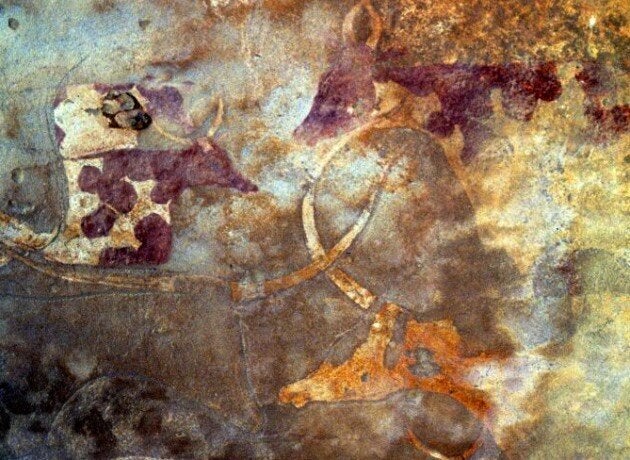
Humans didn't always have the ability to digest milk products -- for thousands of years, lactose intolerance was the norm. New research suggests that in North Africa, dairy first showed up in diets around 7,000 years ago.
Nature details the analysis of pottery shards, which were covered with traces of fat from a fermented dairy product.
The shards, which date from 5200 to 3000 B.C., were found in southwestern Libya's Acacus mountains at a site known as the Takarkori rock shelter. The site itself is covered in colorful drawings of cattle, some depicted with full udders and a few being milked. Unlike the dairy remains, the drawings are difficult to precisely date.
Biomolecular archaeologist Richard Evershed of the University of Bristol, UK, who led the study with archaeological scientist Julie Dunn, told Nature that processing the milk may have made dairy products more digestible, as most people at that time had some level of lactose intolerance.
“They could have consumed milk but it might have made them a little poorly,” Evershed told the publication. “Perhaps they were processing the milk to lower the lactose content.”
So what exactly were these people making? Dunn told The New York Times that the answer remains murky. “We can’t tell whether it was butter, cheese or yogurt," she said, "but we can tell they were processing it in the pots.”
The ability to digest dairy was a pivotal moment in human history. Mark Thomas, a geneticist at University College London, explained in Nature:
He speculates that mutations that allow adults to digest lactose, or lactase persistence, that arose around 6,000 years ago in Europe and later spread to Africa could have offered a unique benefit in a parching climate. Fresh milk is a reliably uncontaminated source of fluid, and people able to tolerate lactose may have stayed better hydrated than people without the gene.
The discovery does not determine the earliest point at which dairy was introduced into the adult human diet, but it predates the spread of the gene variants that ultimately enabled people to digest milk products in adulthood. Prior to that point, humans generally lost the ability to process milk after the age of five.
Thomas stated in a 2009 article in Scientific American that he believed dairy farmers during the Neolithic period in Central Europe may have been the first people to have a comfortable tolerance for cow's milk.